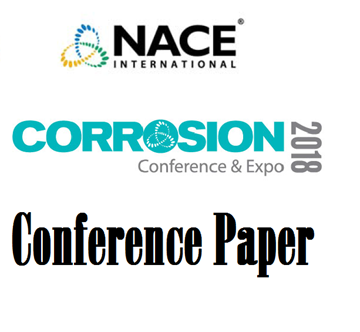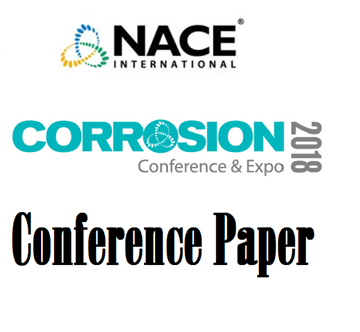Among the corrosion-resistant alloys (CRA), Nickel (Ni)-alloys having an optimum concentration of Cr, Mo and W, are widely used for applications which require high resistance to uniform corrosion, localized corrosion and stress corrosion cracking. However, in very aggressive conditions, i.e., in the presence of high concentration of chlorides, oxidizing environment and high temperatures, these materials can suffer from localized corrosion. There are various quantitative methods used to investigate the localized corrosion resistance performance of CRA, like pitting resistance equivalent (PRE), weight loss technique (ASTM G-48) and electrochemical techniques (ASTM G-61, Potentiostatic, Galvanostatic, Potentiodynamic-Galvanostatic-Potentiodynamic etc.). Although, these techniques are extremely useful to rank the materials localized corrosion resistance performance in a particular environment but do not suggest an exact mechanism for the role of alloying elements to materials inhibition to local attack. On contrary, surface characterization techniques, like optical microscopy (OM), scanning electron microscopy (SEM), energy dispersive X-ray (EDX), profilometry, Auger electron spectroscopy (AES), X-ray photoelectron spectroscopy (XPS), secondary ion-mass spectroscopy (SIMS), which are utilized for the surface analyses, pre-and post-corrosion testing, assist in understanding the role of major and minor alloying elements but do not provide the characteristic data needed for the materials selection process. This study reviews the localized corrosion performance of corrosion-resistant alloys (like HASTELLOY®1 C-4 (N06455), C-276 (N10276), C-22® (N06022), C-2000® (N06200), C-22HS® (N07022), HYBRID-BC1® (N10362), G-35® (N06035) and HAYNES® 625 (N06625)) and high-temperatures alloys (like HASTELLOY® X (N06002), HAYNES® HR-160® (N12160), HAYNES® 230® (N06230), HAYNES® 282® (N07208) and HAYNES® 718 (N07718)) containing varying amount of Cr, Mo and W, using both quantitative and surface characterization techniques. The characteristic potential (breakdown potential, repassivation potential) and temperatures (critical pitting temperature, critical crevice temperature, protection temperature) were obtained from the weight loss and electrochemical techniques. The corroded specimens were characterized by surface characterization tools for a better understanding of the role of alloying elements on inhibition of localized corrosion.
Key Words: Ni-Cr-Mo Alloys, Ni-Cr-Mo-W Alloys, ASTM G-48, PREN, Critical Pitting Temperature, Critical Crevice Temperature, Potentiodynamic-Galvanostatic-Potentiodynamic, Breakdown Potential, Repassivation Potential, Profilometer, SEM, EDX, AES




